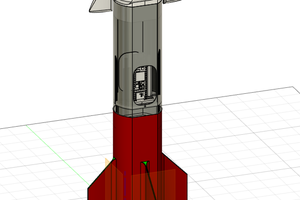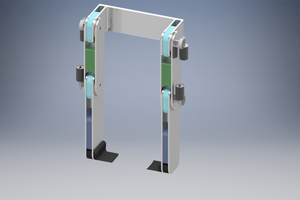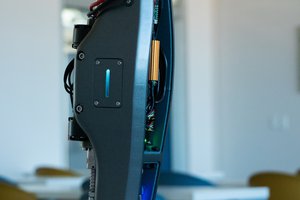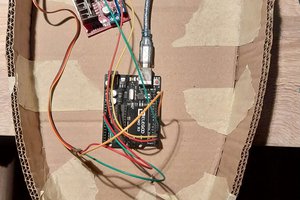- Propulsion System Selection: The project began by selecting a 70 mm, 1.5 kW EDF unit, driven by an 80 amp Electronic Speed Controller (ESC). The propulsion system was powered by a four-cell, 1.8 Ah Lithium Polymer (LiPo) battery.
- Rocket Design & Construction: The rocket body was constructed from a cardboard tube due to its lightweight and cost-effective nature. The motor was placed at the front of the rocket for improved air intake and stabilization during flight. 3D printing was employed to create rocket components, including the nose cone and structural elements.
- Avionics Integration: The avionics system, powered by a Raspberry Pi Pico, controlled launch, flight stages, and monitored data like altitude, velocity, and attitude. Sensors were added for data collection, and an SD card was integrated for recording. A remote control (RC) was used to initiate launches and manage emergencies.
- Initial Launch Attempts: Initial launches faced challenges, including stability issues and motor spin-up delays. Flight data revealed that the rocket struggled to gain sufficient speed before lifting off.
- Parachute Integration: A parachute system was developed using both mechanical and electronic methods for deployment. After several attempts with mechanical deployment using black powder charges, an electronic release mechanism was adopted, improving reliability.
- Revisions and Modifications: Iterative design changes were made to improve rocket stability, center of gravity, and center of pressure. Modifications included enhancing the launch pad for better speed buildup, adjusting the rocket's shape, and balancing weight distribution.
- Final Launch and Conclusion: After multiple tests and design iterations, a final launch was executed with the redesigned rocket. Although the parachute deployed, a failure in the parachute's ejection mechanism led to a crash, resulting in irreparable damage to the rocket's structure and electronics.
- Lessons Learned and Future Prospects: The project identified crucial factors affecting rocket stability, including center of gravity and center of pressure. Weight reduction and further improvements were recognized as opportunities for future iterations. The project team remained open to collaboration and insights from experienced rocket scientists for further refinements.
0%
0%
Electric Model Rocket
Using an EDF in place of a conventional rocket motor to make a model rocket
 J
J
 Hunter Santana
Hunter Santana
 Javier
Javier
 Maximiliano Palay
Maximiliano Palay
 theo.ducarne
theo.ducarne